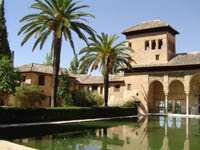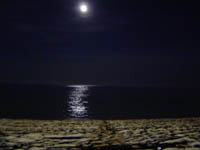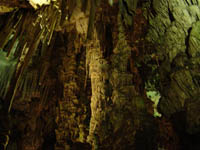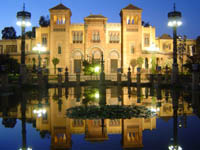Posted: September 28th, 2003 | No Comments »
At this year’s Pan European Portal Conference, Stuart Sim talked about his experience on developping portals in higher education and the challenges of eLearning. A few notes:
Challenges: eLearning business collapsed. eLearning specifications are not standards. Multiple legacy system environments. Accessibility constrains. Complex pedagogy
Define problem: Technology is a tool, not an answer
Issues: How do we foster communities. What does student-centered mean. What will the next generation of online learning systems and portals look like. Accessibility. Secutity
Model the solution: Understanding the demand with UML, generic framework, XML for data representation
Posted: September 28th, 2003 | No Comments »
At this year’s Pan European Portal Conference, Adam Rybicky defined elements to take into consideration for a uPortal implementation.
Project planning: develop and interactive release schedule
Risk management: secure a budget for new staff, hardware, software, consulting and training. Avoid large releases. Document requirements and obtain approval. Need a roadmap for development. Eliminate dependencies
Misc: Use of LDAP/EduPerson. Make code reviews. Designate developer mentors (J2EE best practices)
Capacity planning: Define target audience size (enterprise users, occasional users). Peak time number of users of enterprise portal is 8% of the entire user population
Sources: uportal.biz, Unicon Academus
Posted: September 27th, 2003 | No Comments »
Hehehe… James Carville‘s metaphors will always make me laugh…
“Drag a hundred-dollar bill through a trailer park, you never know what you’ll find.”
Posted: September 26th, 2003 | No Comments »
Each visit at the EPFL (see previous) offers small unique moments of contemplation.
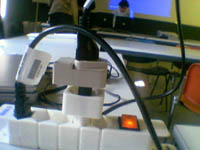
Posted: September 26th, 2003 | No Comments »
URLManager, developped by Matthias Laux, would be perfect to us in an application that keep track of the links and comments I make on all the web documents/articles I read thru the day. I use a friggin low-tech text file for the moment. The package contains:
URLManage: manages all interactions with the link data in the RDBS
URLCheck: automatically checks the links stored in the database against the network
URLPublish: creates web pages
I could even make it as a shareable article link manager where people in a community (e.g. a blog community) could post/submit the links of articles/documents they read and share comments. This could be integrated into and distributed in every community members’ weblog (the same way the shoutblog is).
Posted: September 22nd, 2003 | No Comments »
J2ME & Gaming is a GPL book for Java programmers who are interested in game mobile game development. Being written by jasonlam604.
Posted: September 18th, 2003 | No Comments »
p2psockets is an very interesting reimplementation of standard Java sockets on top of JXTA. Standard TCP/IP sockets and server sockets are theoretically peer-to-peer but in practice are not due to firewalls. The P2P Sockets project deals with these issues by re-implementing the standard Java classes on top of the JXTA. P2P Sockets effectively hides Jxta by creating a thin illusion that the peer-to-peer network is actually a standard TCP/IP network. If a peer wishes to become a server they simply create a P2P server socket with the domain name they want and the port other peers should use to contact them. P2P clients open socket connections to hosts that are running services on given ports. Hosts can be resolved either by domain name, such as “www.nike.laborpolicy”, or by IP address, such as “44.22.33.22″. Behind the scenes these resolve to JXTA primitives rather than being resolved through DNS or TCP/IP. For example, the host name “www.nike.laborpolicy” is actually the NAME field of a Jxta Peer Group Advertisement. P2P sockets and server sockets work exactly the same as normal TCP/IP sockets and server sockets.
The P2P Sockets project already includes a large amount of software ported to use the peer-to-peer network, including a web server (Jetty) that can receive requests and serve content over the peer-to-peer network; a servlet and JSP engine (Jetty and Jasper) that allows existing servlets and JSPs to serve P2P clients; an XML-RPC client and server (Apache XML-RPC) for accessing and exposing P2P XML-RPC endpoints; an HTTP/1.1 client (Apache Commons HTTP-Client) that can access P2P web servers; a gateway (Smart Cache) to make it possible for existing browsers to access P2P web sites; and a WikiWiki (JSPWiki) that can be used to host WikiWikis on your local machine that other peers can access and edit through the P2P network.
Paper Airplaine, a vision of a Mozilla plugin that helps creating collaborative communities without setting up servers should be bbased on p2psockets.
Posted: September 18th, 2003 | 4 Comments »
Estoy de nuevo en Suiza.

Muchisimas gracias a todos en Asturias y Andalucia!!! Mi estancia estaba llena de momentos inolvidables!
Posted: August 30th, 2003 | No Comments »
Notas de mi curso de arte espanol en la Universidad de Oviedo.
Modernismo: Rupturo con la tradición histórica. Más que une escuela existen individualidades. Fantasía creadora. Formas vegetables. Línes curvas. Unión de arquitectura y decoración.
Gaudí (1852-1926): Inspiración en la naturaleza. La línea recta prácticamente desaparece. No se reconoce la arquitectura. Utilización de materiales de color. Toda adquiere movimiento. Tradición y mdernidad.
Velázquez (1599-1660): Primera etapa tenebrista. Retratos, temas mitológicos, religiosos, paisajes… Gran manejo de la luz. Conquista de la profundidad. Perspectiva aérea. Predominio del verde, azul y blanco en los fondos.
Goya (1746-1828): Su pintura sigue la evolución histórica. Amplia obra, variedad tanto iconográfica como técnicamente. La fantasía y la critica, motor de su orbra. Pincelada suelta, preocupación por la luz. Sus retratos son de gran penetración psicológica. Cartones para tapices: Pinturas al óleo sobre tela. Temas populares, fiestas, juegos. Gran colorido. Pinturas negras: Asuntos contemporáneos y mitológicos. Figuras grotescas. Crueldad, violencia. Mundo sin esperanza.
Grabados de Goya: Tauromaquia: Temática relacionada con el mundo del toro. Desastres: La guerra como actividad no heroica. Reflejo de tortura, muerte, hambre. Universalización de la guerra. Disparates: Lo absurdo lo domina todo. Figuras gigantescas. Incluso los asuntos de bromo adquieren un aire tenebroso y siniestro. Caprichos: Censura los errores y los vicios humanos. Universaliza los temas. Crítica pero can afán constructivo. Corrupción de costumbres. Superstición, anticlericalismo, ignorancia.
Arte Islámico: Arquitectura en armonía con el paisaje. Elementos constructivos (yeso, madera, ladrillo). Arcos de herraduura con dovelas alternando el color. Alfiz. Mayor decoración interior (temas de carácter vegetal). Pintura y escultura restringidas por motivos religiosos. Mezquita (construcción fundamental). Epoca califal (Mezquita de Córdoba – 786), Epoca almohade (Torre del Oro, Giralda de Sevilla – s. XIII), Epoca nazarí (Alambra de Granada – s. XIV).


